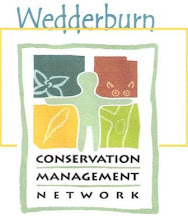
Carbon emissions trading is a hot topic these days and among all the smoke, mirrors and political tug of war around this subject it is difficult to obtain a proper understanding of what this kind of trading is all about and the logic behind it. The main principle to keep in mind is that the availability of clean air and a reduction in greenhouse gasses in the atmosphere is worth money to some people.
If the demand for clean air and species diversity gets high enough there will be a push for a trading system that includes not only carbon emissions, but also biodiversity and landscape conservation. A future where landholders get paid to manage parts of their land for conservation might sound like a farfetched fantasy of an overly optimistic environmentalist, but the fact is that in very small doses this is what is starting to happen already.
For the last few years the Victorian government has been running the Bush Broker scheme. This scheme brings together developers, power companies, road construction managers and others who need to clear native vegetation for their different projects, and landholders who own similar bits of bush. The state laws dictate that the land clearer needs to offset the vegetation losses by having similar land conserved. Through this Bush Broker scheme, landholders receive a negotiated payment to manage their remnant vegetation for conservation.
All landholders involved in deals so far report successful business. One striking detail emerging from this scheme is that the better condition natural bush is in, the more money it is worth, showing that good long-term management brings in more dollars down the track.
Stewardship payments for landholders or a broader biodiversity and carbon trading scheme might not be such a far flung fantasy after all
Another way money comes into the countryside for conservation work is through national non profit groups such as Bush Heritage Australia (BHA) or the Australian Wildlife Conservancy (AWC). Donors and members give money on the understanding this gets spent on the protection of land these organisations acquire.
Finally, a third stream of dollars finds its way from private businesses that benefit from having a clean, green image. These businesses and other organisations need to be able to tell their clients that they support the Plains Wanderer, Helmeted Honeyeater or the Bilby or that they are a company that is “carbon neutral”. The demand of the clients of these companies for clean and green products is big enough to result in millions of dollars going into conservation works on private land throughout Australia. As Wedderburn landholders we just need to become a lot more tuned in to these opportunities. There are currently some 36 broker firms operating in this national “voluntary offset” market of which only Greenhouse Balanced is active in the Wedderburn area.
Article by Jeroen Van Veen

No comments:
Post a Comment